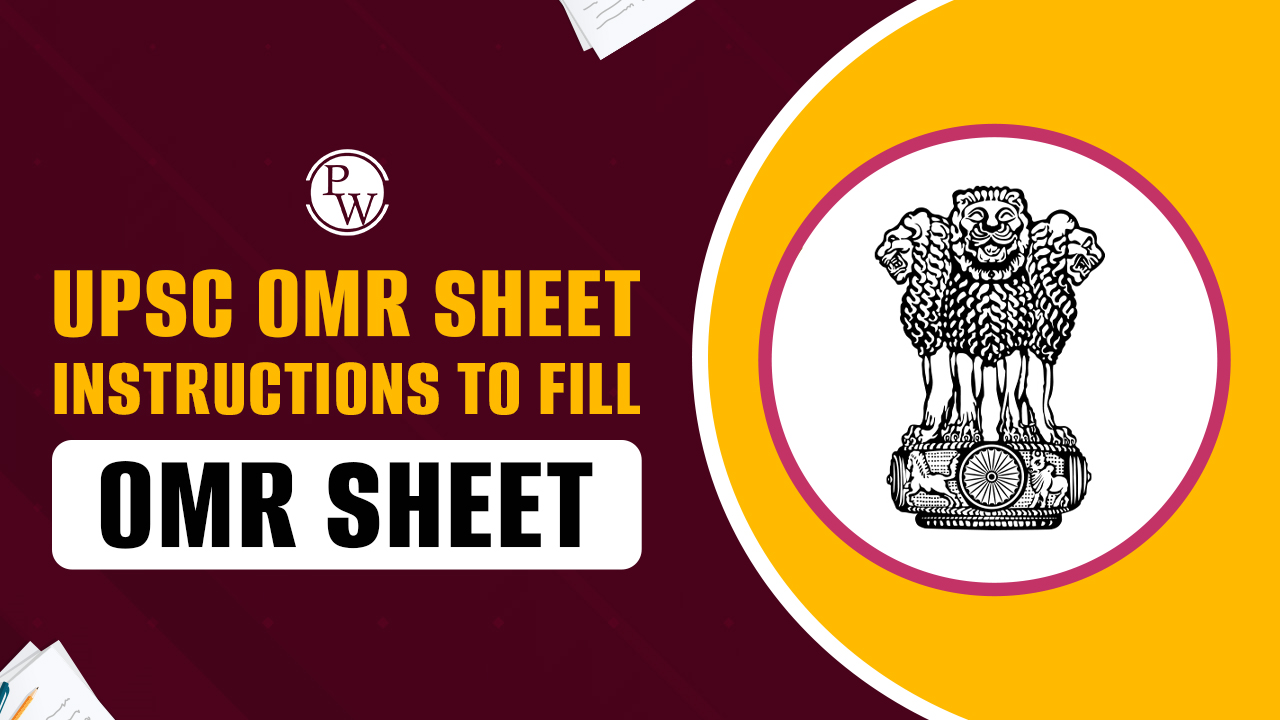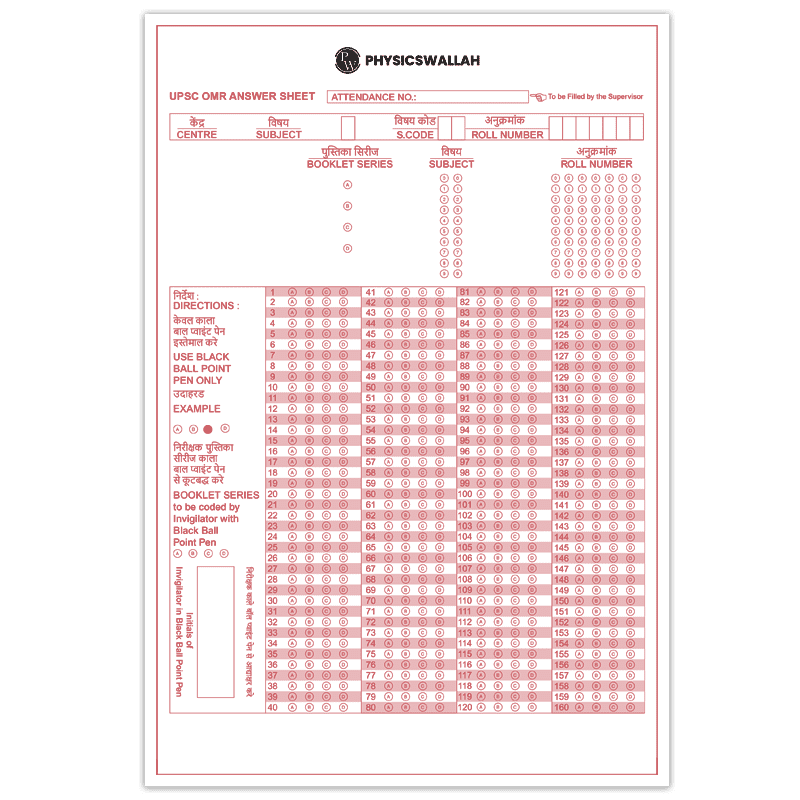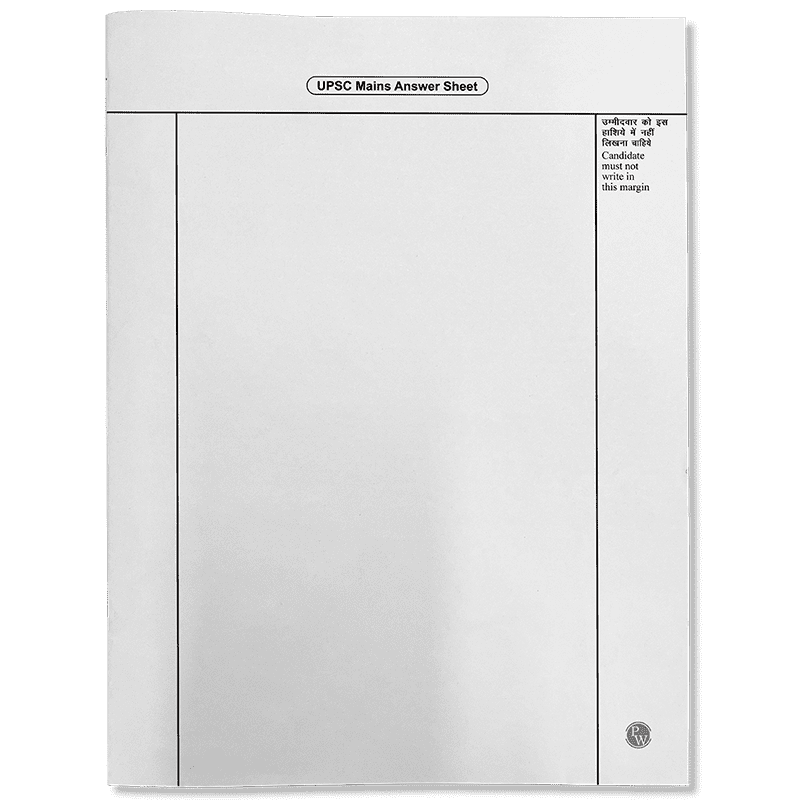UPSC OMR Sheet - Instruction to Fill OMR Sheet

UPSC OMR Sheet:- The UPSC (Union Public Service Commission) exam is one of the most prestigious and competitive examinations in India, conducted to select candidates for various civil services posts, including the Indian Administrative Service (IAS), Indian Police Service (IPS), and Indian Foreign Service (IFS), among others. The exam is held in three stages: the Preliminary exam, the main exam, and the Interview.
For the UPSC 2025 exam, the official notification will be released on 22 January 2025, and the Prelims exam is scheduled to take place on 25 May 2025. With the exam date approaching, it becomes crucial for aspirants to properly understand and follow all the instructions, especially regarding filling out the OMR sheet. Any errors in filling out the OMR sheet could lead to the immediate cancellation of the paper. Therefore, it is important to take the time to carefully read the instructions and avoid mistakes during this process. Go through the article below to learn about the UPSC OMR Sheet and common mistakes to avoid during the exam.
UPSC OMR Sheet Instructions
As aspirants prepare for the exam, it is important to know how to fill the UPSC OMR sheet correctly, as any mistakes could lead to answers being rejected or even result in negative marks. Here are the UPSC OMR Sheet Instructions:-
-
Filling the Answer Sheet: Aspirants must use a black ballpoint pen to fill in the exam centre, subject, and test booklet series on the UPSC OMR sheet. They must also mark the booklet series (A/B/C/D), subject code, and their roll number in the circles provided.
-
Faulty Test Booklet: If the test booklet doesn't have a series number or isn’t numbered correctly, aspirants should inform the invigilator and ask for a replacement immediately.
-
Roll Number Correction: If there is a mistake while marking the roll number, the invigilator must sign and initial the correction, and the supervisor should also countersign it.
-
Check the Test Booklet: As soon as the exam starts, aspirants should check their test booklet for missing pages or any damage. If they find any issues, they should get a new booklet of the same series and subject.
-
Rough Work: Aspirants should use the rough workspace in the UPSC OMR sheet only for calculations or notes. Personal details such as names should not be written here.
-
Keep the OMR Sheet Intact: Aspirants should not fold, tear, or damage their OMR sheet for UPSC. Additionally, nothing should be written on the back of the sheet.
-
Marking Answers: Once an answer is marked on the OMR sheet UPSC, it cannot be erased, so aspirants must make sure to mark answers carefully.
-
Answering the Questions: The test booklet will have questions with four options. Aspirants need to mark their answer on the UPSC Prelims OMR sheet next to the correct serial number.
Check out: PW UPSC Mains Answer Sheet
What are Common Mistakes in Filling OMR?
1. Marking or Writing in the Wrong Areas
Make sure to only write your answers in the areas designated for marking on the OMR sheet UPSC. Writing anywhere else, or making marks in the wrong places, could make your responses invalid. This could result in your OMR sheet being rejected during evaluation.
2. Incomplete Bubbling or Encoding
You must completely bubble or encode your answers on the OMR sheet. Leaving answers partially marked or incomplete can cause them to be misread or not recorded at all, meaning you won’t get any marks for those questions.
3. Failure to Encode the Booklet Series
It’s very important to encode the correct booklet series on the OMR sheet UPSC. For example, if your booklet is series ‘A’ but you mark it as series ‘B’, your answers will be evaluated incorrectly. If you forget to encode the booklet series at all, the UPSC may reject your OMR sheet.
4. Incorrect Subject Code and Roll Number
Ensure that you accurately encode your subject code and roll number on the OMR sheet. Mistakes in this information could cause your answers to be assigned to the wrong person or not considered at all during the evaluation process.
5. Common Scannable Attendance List (SAL) Mistakes
In addition to the OMR sheet, you’ll need to fill out the Scannable Attendance List (SAL). Be careful to:
-
Mark your presence in the correct section on the SAL. If you mark it in the wrong place, your attendance may not be recorded properly.
-
Only fill out the designated areas. Avoid writing in multiple places, as it can cause confusion and errors in recording your details.
Also Check, PW Exam Answer Sheets
How to Rectify the Mistakes on UPSC OMR Sheet
Correcting mistakes on the UPSC OMR sheet can be tricky, as it's designed to be read by a machine. However, there are some simple steps aspirants can take to fix any errors and avoid problems:
-
Double-Check the OMR Sheet
Before handing in the OMR sheet, aspirants should take a moment to carefully review all the details. Make sure the roll number, subject code, and test booklet series are correctly filled in. Also, check that all answers are fully bubbled in and there are no stray marks. -
Inform the Invigilator Immediately
If an aspirant notices a mistake on the OMR sheet, they should let the invigilator know immediately. The invigilator can guide them on what to do next, and in some cases, may provide a new sheet to correct the mistake. -
Follow the Instructions Carefully
Aspirants should always read the instructions provided by UPSC on how to fill out the OMR sheet. These instructions are there to help avoid common mistakes, so it’s important to follow them closely. -
Use Whitener for Small Mistakes
If an aspirant makes a small mistake, such as a wrong subject code or roll number, they may be allowed to use a whitener. However, it should only be used for minor errors, and the invigilator must sign off on any changes made. -
Don’t Overwrite or Cross Out
Overwriting or crossing out answers on the OMR sheet can cause problems during the checking process. If a mistake is made, aspirants should inform the invigilator and ask for a new sheet if necessary. This will help avoid any issues during the evaluation. -
Ask for a New OMR Sheet if Necessary
If an aspirant realises there’s a larger mistake, such as a wrong booklet series, they should ask the invigilator for a new OMR sheet. The invigilator will replace it, allowing the aspirant to continue the exam without worries
Check out: UPSC CSE Books
UPSC OMR Sheet FAQs
1. What is an OMR sheet in the UPSC exam?
The OMR (Optical Mark Recognition) sheet is used to record answers in the UPSC exam. Aspirants mark their answers on this sheet, which is then read by a machine for evaluation.
2. How should I mark answers on the OMR sheet?
Aspirants must use a black ballpoint pen to fully bubble the correct answer. Make sure to fill the circles completely without making any stray marks.
3. What happens if I make a mistake on the OMR sheet?
If a mistake is noticed, aspirants should inform the invigilator immediately. They may be allowed to correct the error or may be given a new OMR sheet, depending on the mistake.
4. Can I use a whitener on the OMR sheet?
A whitener can be used to correct minor mistakes, such as errors in the subject code or roll number. However, it should be used sparingly and with the invigilator’s approval.
5. What should I do if I mark the wrong booklet series?
If aspirants mark the wrong booklet series, they should immediately inform the invigilator for assistance. Incorrectly marking the booklet series can lead to incorrect evaluation.











